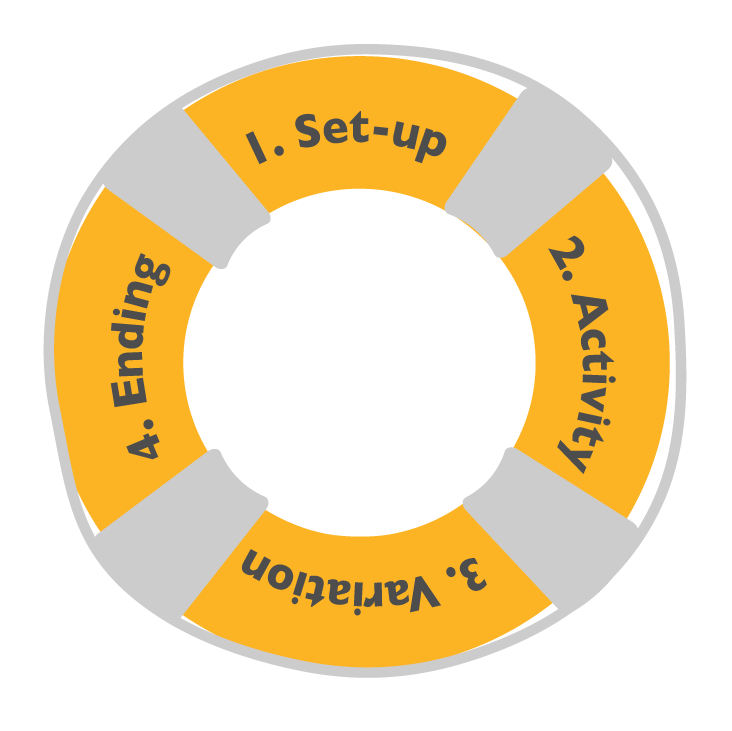
How to Establish a Bedtime Routine for Young Children
How to Establish a Bedtime Routine for Young Children

Quality sleep is essential in childhood, yet research shows that as many as 25 to 50 percent of children have trouble sleeping. Establishing a consistent bedtime routine can be the difference between good sleep habits and sleepless nights. A predictable routine gives your child a sense of security, helps them learn self-control, and teaches them how to fall asleep on their own.
The good news is that it only takes a few nights of following a bedtime routine to see improvements in your child’s sleep. Our S.A.V.E. approach can help you establish an effective bedtime routine that helps your child go to sleep earlier, take less time falling asleep, sleep longer, and wake less during the night.
Set-up
The first step in our S.A.V.E. approach is the set-up. This starts way before the routine ever begins with a plan! Take a look at this chart to see the average number of hours of sleep recommended for children by age. Then factor in their naps (if there are any) and figure out what time your child should be going to sleep and waking up. Next, work backward from that time and select activities that will prepare your child for sleep by having them relax and wind down. The goal is to reach a place where they are able to fall asleep on their own. Your routine should consist of two components: non-negotiables (brushing teeth, putting on pajamas, final trip to the bathroom, etc.) and extras (baths, books, songs, etc). If you find that your routine consistently lasts longer than 45 minutes, shorten your routine by removing some of the extras. Below are some tips for planning this time:
- Start before your child is tired. It may seem like a good idea to let your kids stay up late to get more tired, but this can backfire. Kids often become overtired, which makes it much harder for them to fall asleep. At first it might help if you set a nightly alarm for when you need to begin the bedtime routine.
- Create a sleep-inducing environment. A cozy bed or crib, room darkening shades, and a noise machine will help your child differentiate between day and night, making it easier to fall asleep. To help your child if they naturally wake up, ensure the room is the same when they fall asleep as it is in the middle of the night. Also, keeping their room cool can help foster the quantity and quality of sleep.
- Turn off screens an hour before bedtime. Blue light from tv, computer, or phone screens can interfere with the production of melatonin, the hormone that controls the sleep-wake cycle.
- Give your child verbal reminders of when bedtime is coming or provide visual representations so your child can understand the different steps in the routine. To reinforce the bedtime routine, encourage your child to be a part of the process. Have them check off steps as they’re completed and ask what step comes next.
Activity
The next step is the bedtime routine itself. Once you’ve decided on the routine (or identified one that you’re already doing), the key is to be consistent. Doing the same things in the same order every single night will make a significant difference in your child’s readiness to fall asleep. Consistency also requires boundaries. Children will test limits, and it’s with the best of intentions that parents accidentally reinforce poor sleep habits. Whether it’s suddenly being on the brink of dehydration or having itchy pajamas, kids are masters at coming up with reasons they can’t sleep. If this is your experience, it can help to come up with a simple reward system. For example, give your child a “bedtime pass” each night, which allows them to come out of their room and make one request (a drink of water, quick story, etc.). If they don’t use the pass, they get a small reward the next morning.
When you’re consistent with the bedtime rules, your child will understand what it means, learn self-control, expect it, and adapt to it. They will even learn to like the predictability of the routine. Fair warning, though, the first few days will require some determination on your part to succeed. It’s important to understand that a little crying can be ok. Some kids will cry for a few minutes as they settle down for sleep or when they wake up in the middle of the night. This is part of the process of them learning to self-soothe. If you go in and comfort them every time they cry, they learn that crying results in you coming in to comfort them, and they don’t learn to comfort themself.
Pro-tip: When it’s time to start your routine, don’t invite resistance by asking, “Are you ready for bed?” Rather, start with an enthusiastic, “Okay, kids! Time for bed!” These statements posed as questions can be confusing to a child because it isn’t clear whether these are directions, questions, or suggestions. When a child doesn’t have a choice about whether to follow the direction, a short, simple direction without extra words like “are you” is clearer.
Variation
Sticking to a routine doesn’t mean you can’t be flexible. This aspect is important because it keeps your child engaged, develops independence and problem solving, and prevents boredom. There are endless ways to vary the bedtime routine:
- Make choices from limited options – which pair of pajamas, books to read, stuffed animals to take, songs to listen to, quiet games to play.
- Have different conversation topics they choose – say three things you love about each other, things you are grateful for, what went well today, etc.
- Allow time for last-minute requests – a stuffed animal, comfortable room temperature, nightlight.
Ending
Finally, each routine ends with the closing and transition. Generally, the bedtime routine will culminate in a goodnight kiss and lights out. Leave the room while your child is sleepy but not asleep yet. This way they learn to fall asleep on their own, and they won’t panic if they wake up in the middle of the night and find you gone.
Bedtime Routines: What to Remember
Here are some takeaways for creating effective bedtime routines with your child:
- Begin the bedtime routine before your child is tired.
- Turn screens off one hour before bedtime.
- Be consistent in your bedtime routine each night.
- Limit activities such as brushing teeth, trips to the bathroom, books, and conversations to less than 45 minutes.
- Create a simple reward system to reinforce positive behaviors during the bedtime routine.
- Leave your child’s room when your child is sleepy but not asleep yet.
Thanks for reading our fourth article in our series on daily routines. Check out our previous blog on toilet training for more helpful hints to establish effective routines for your young child.

Sorry, the comment form is closed at this time.